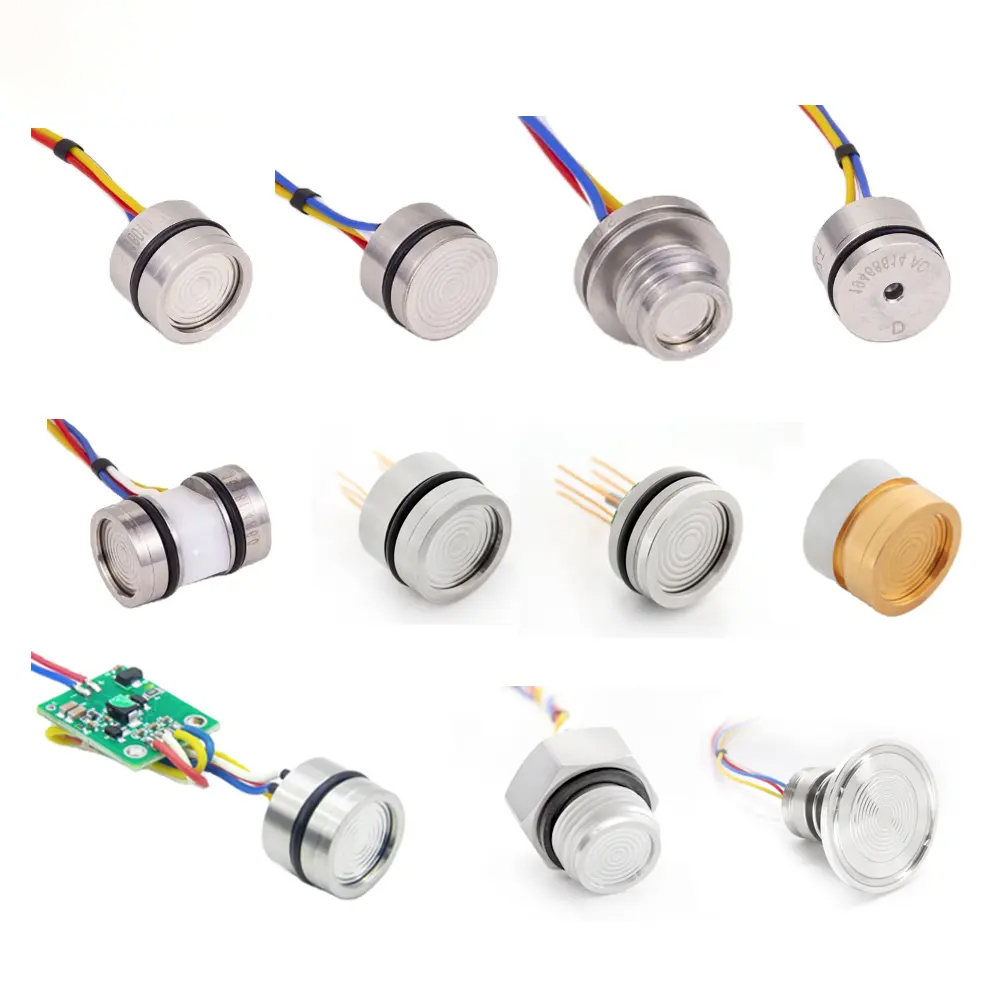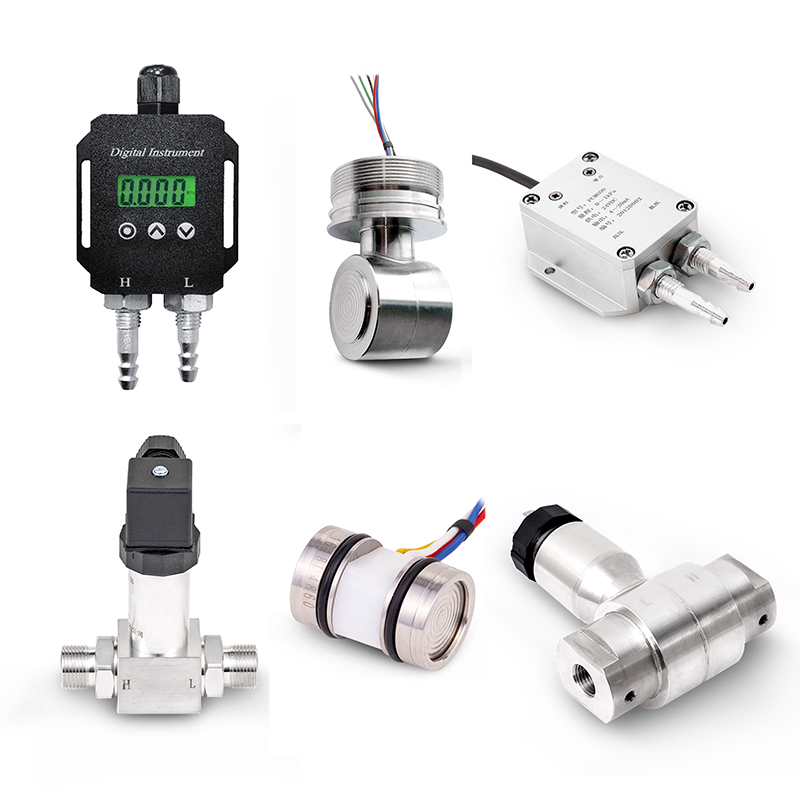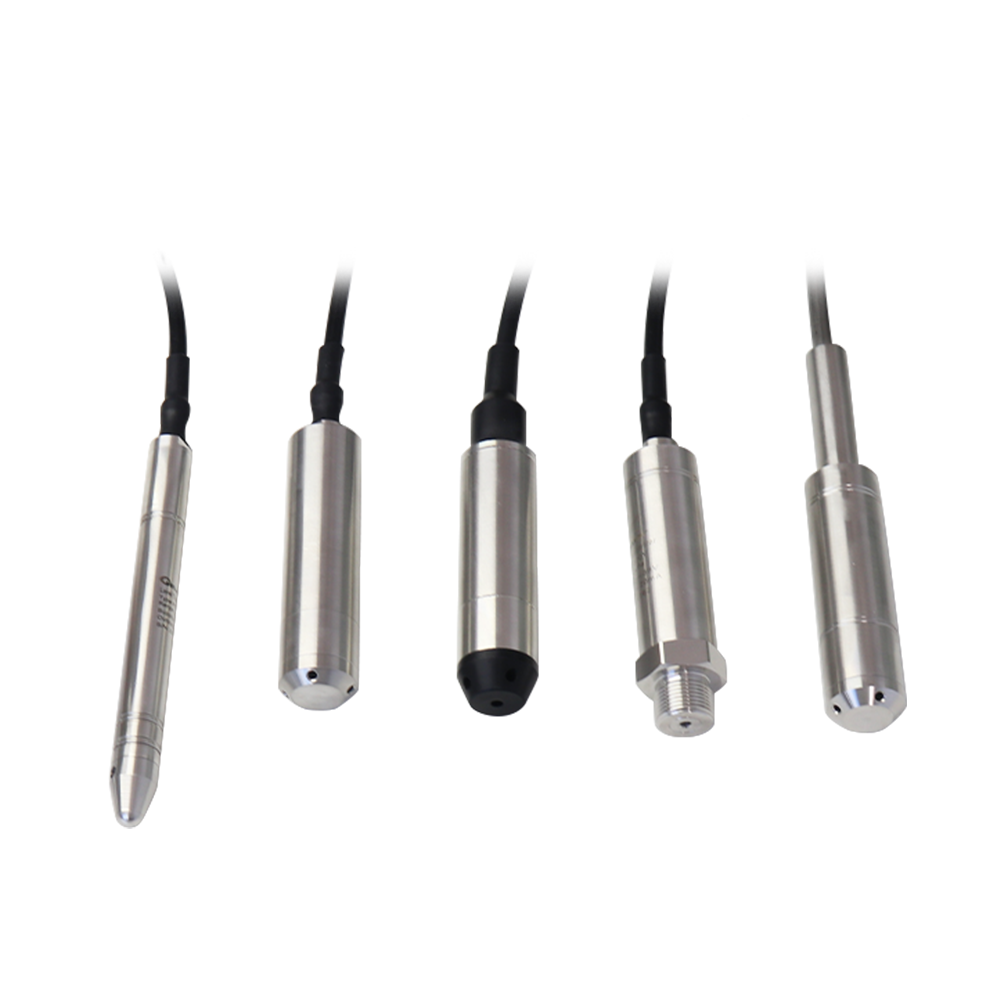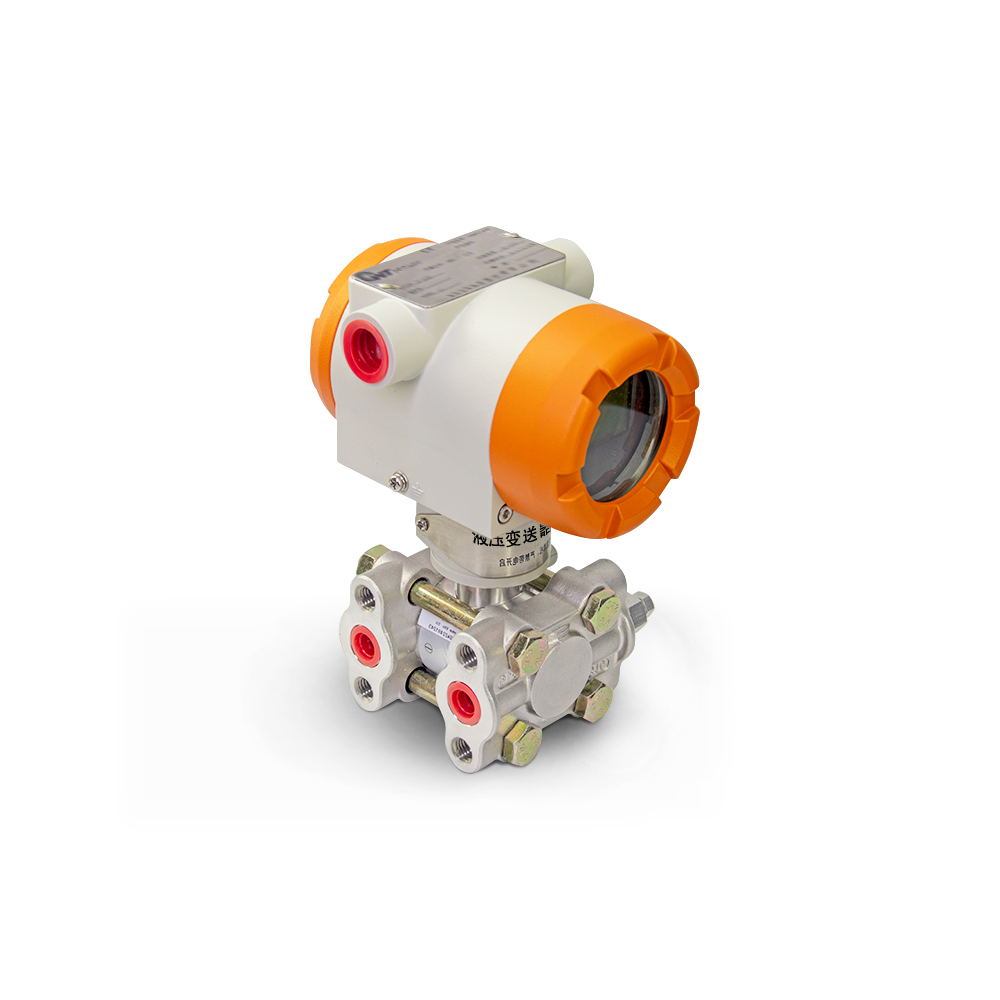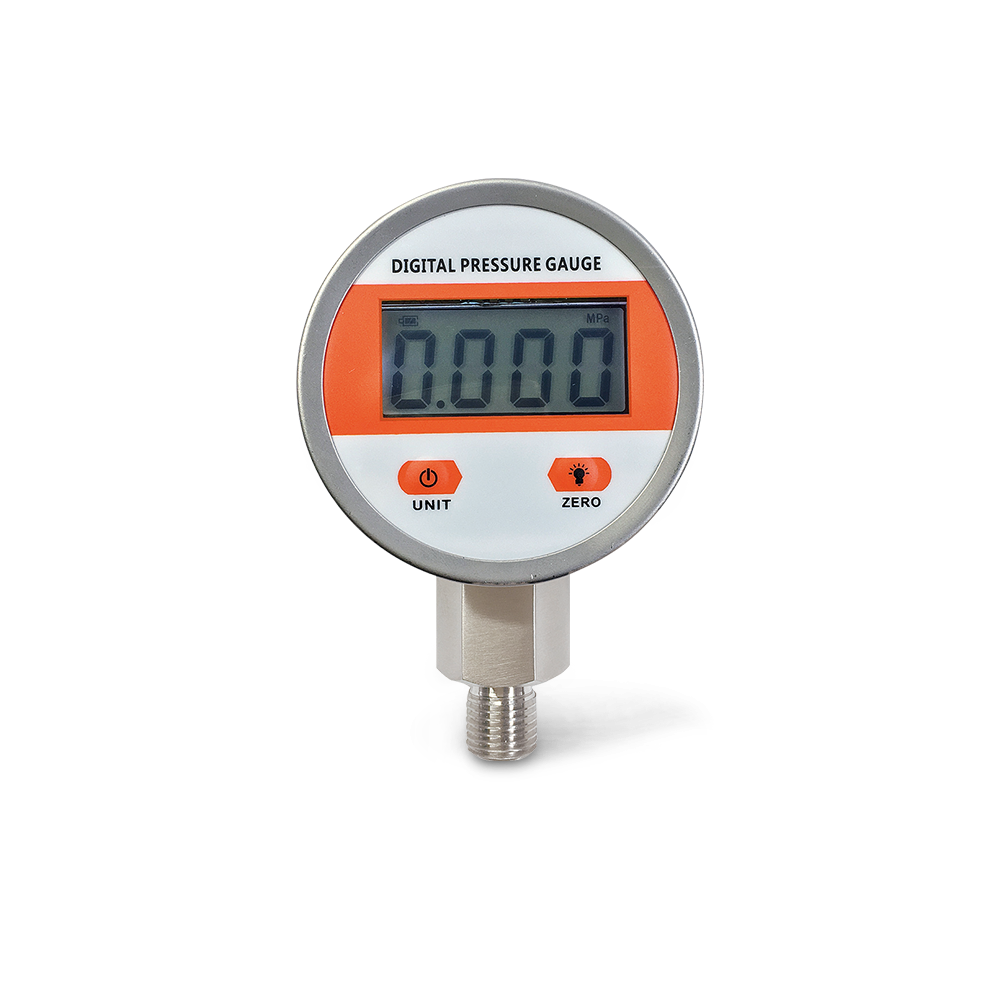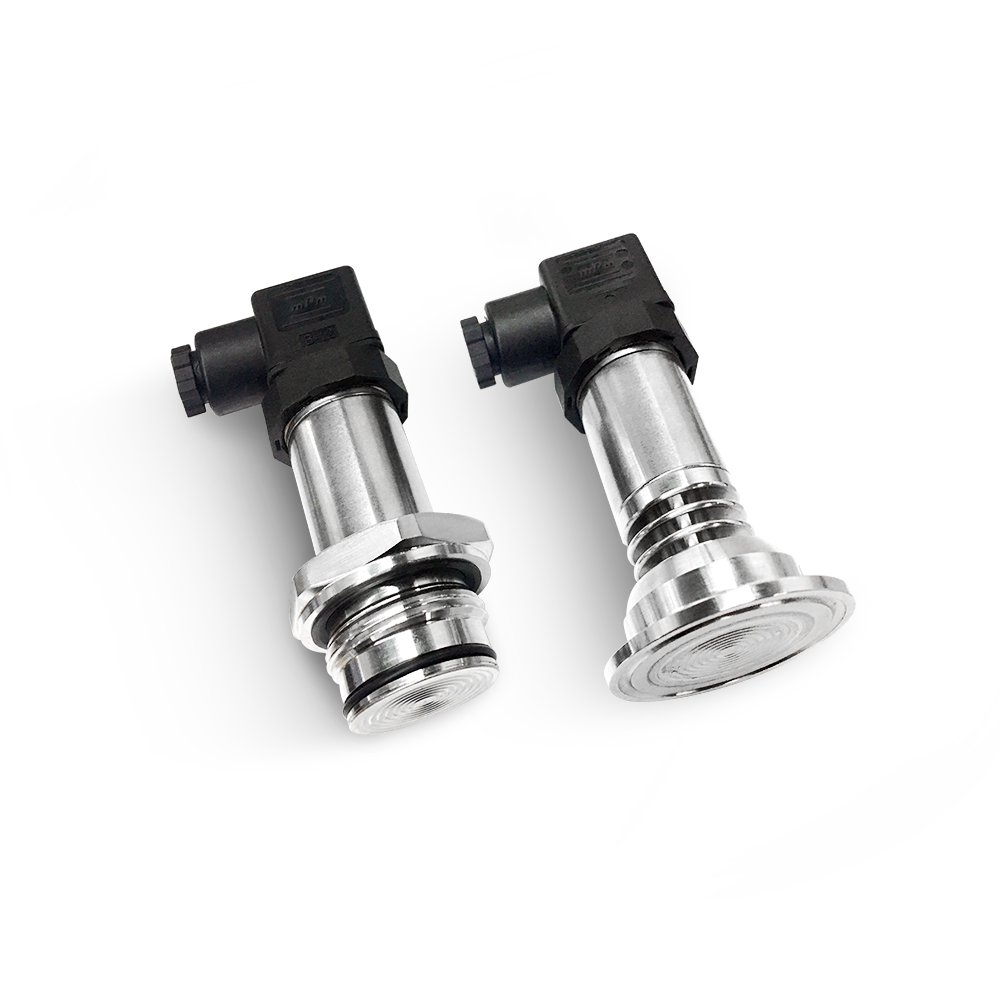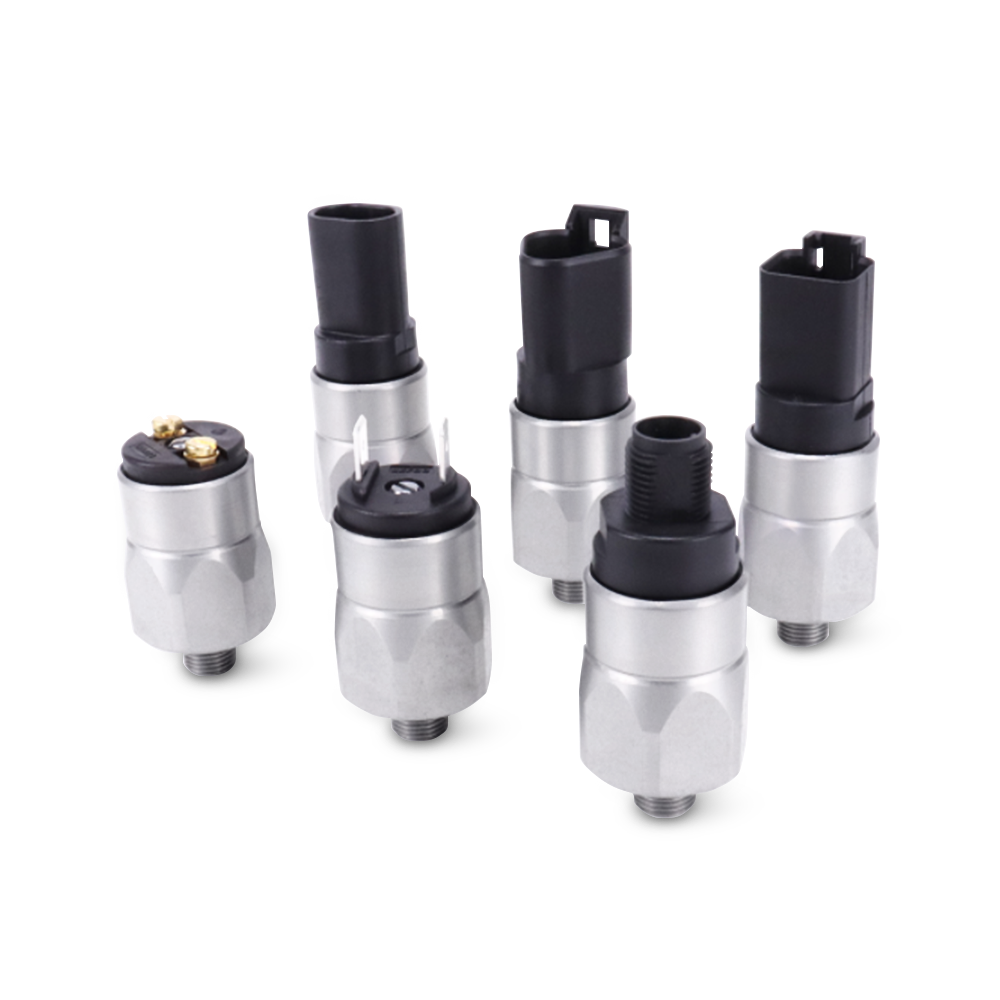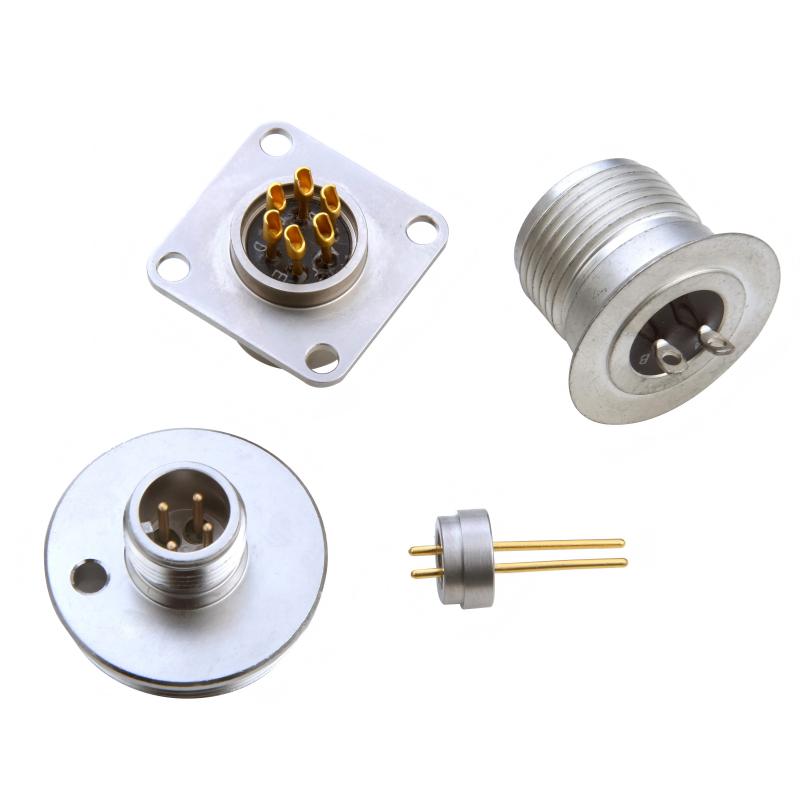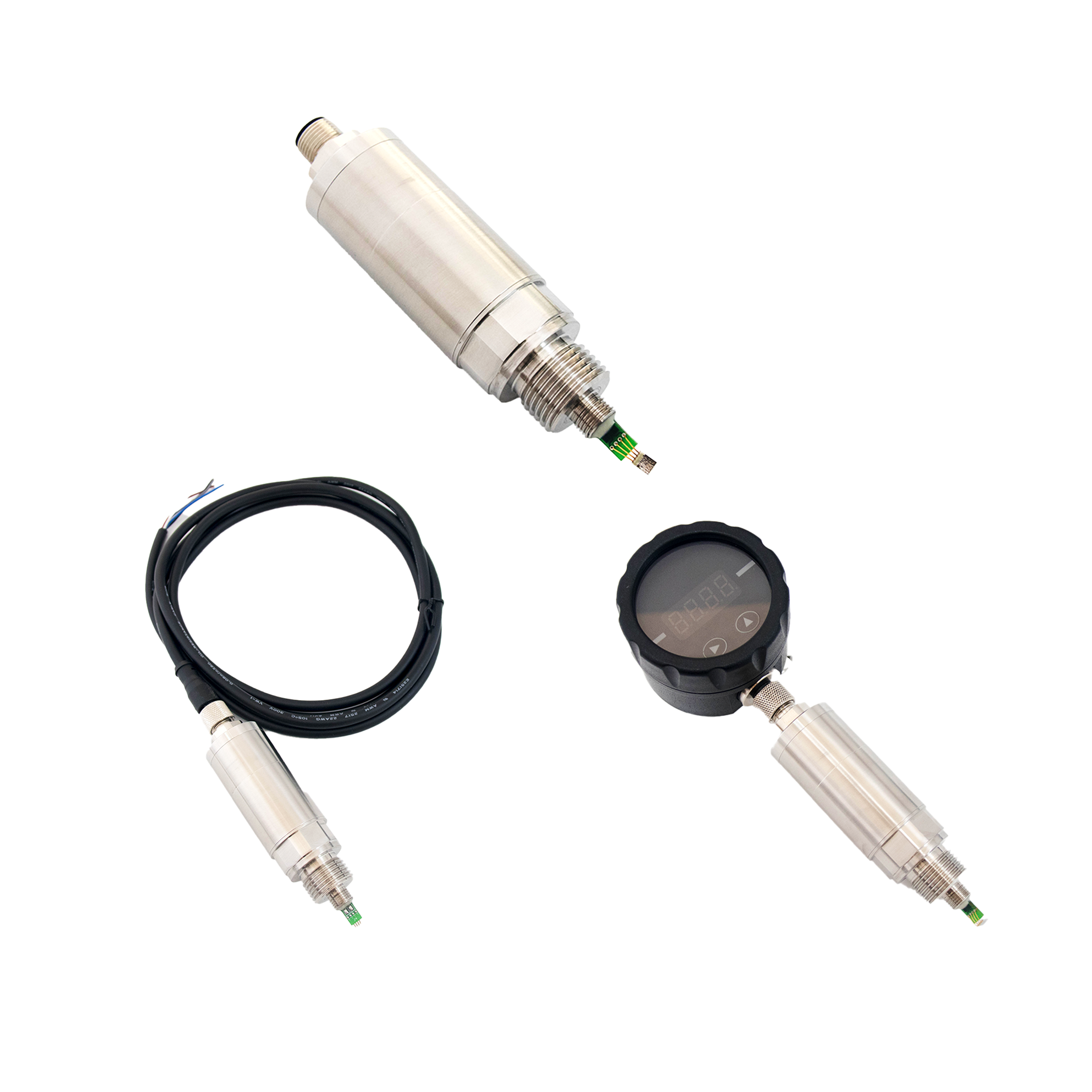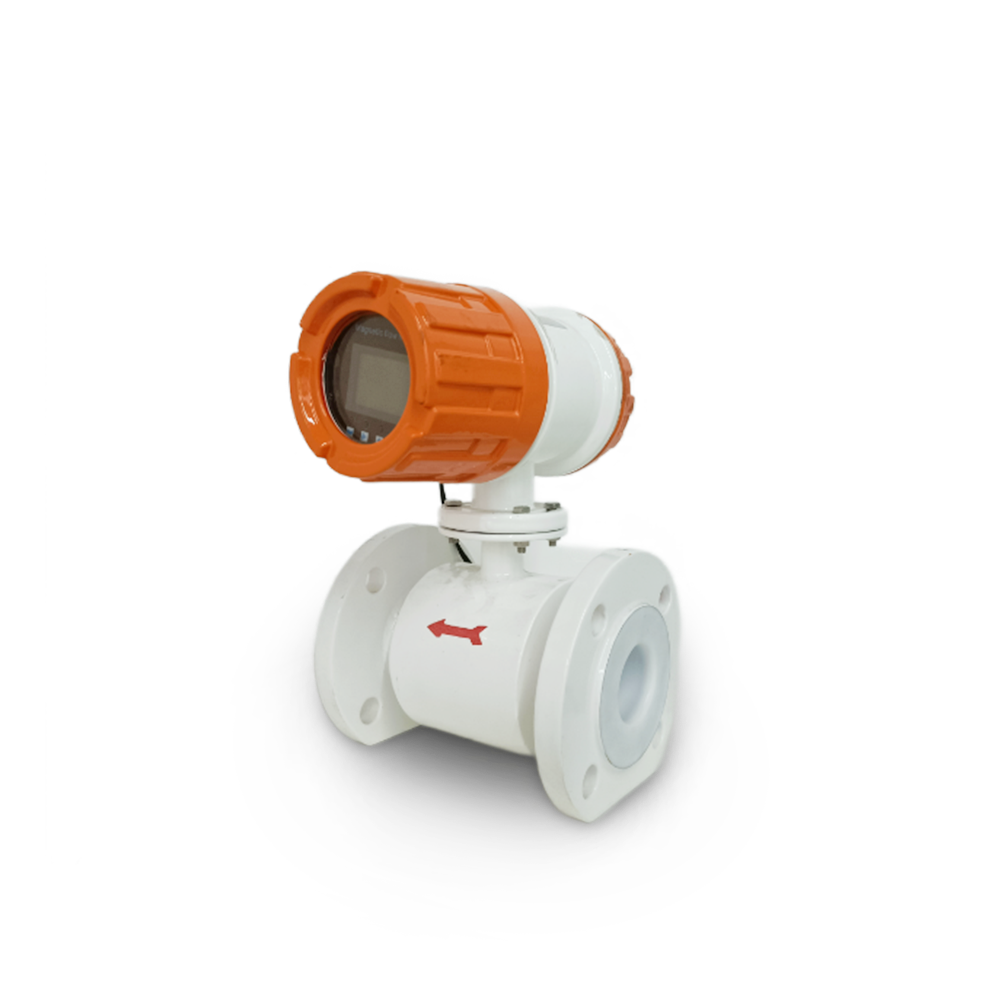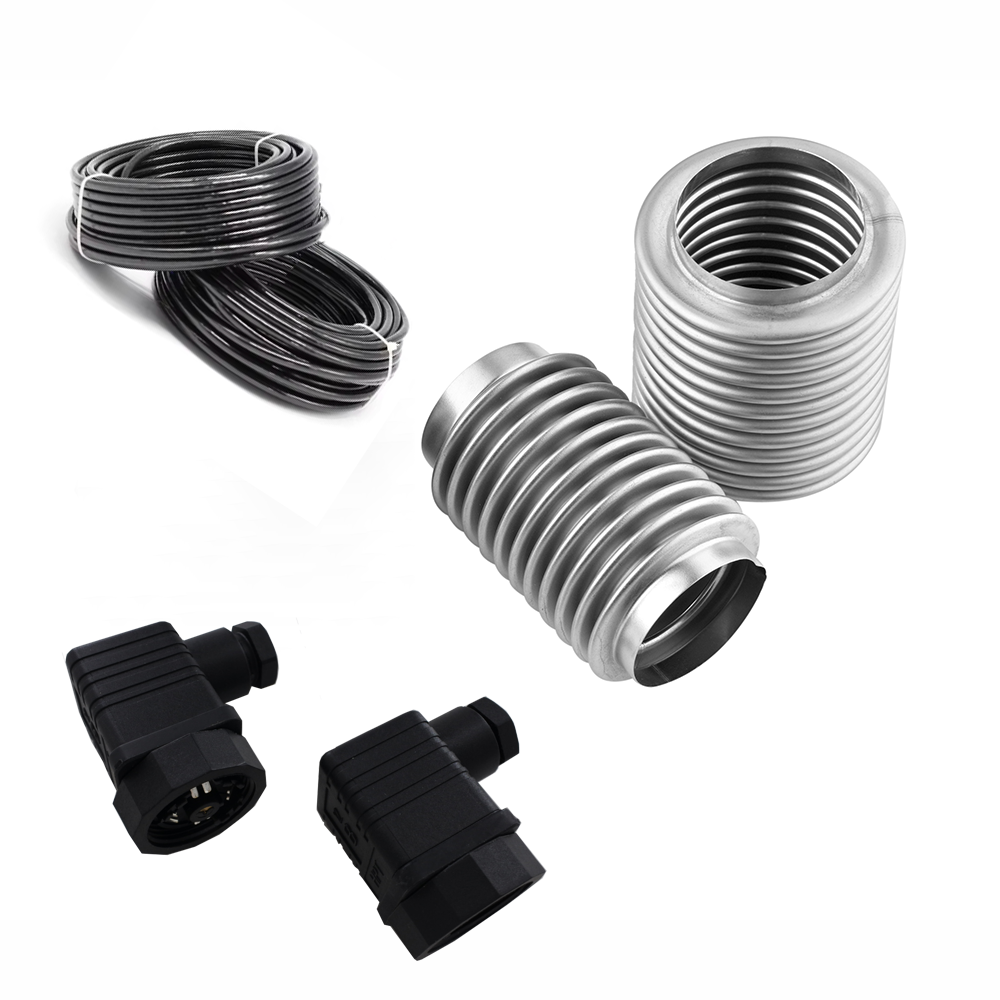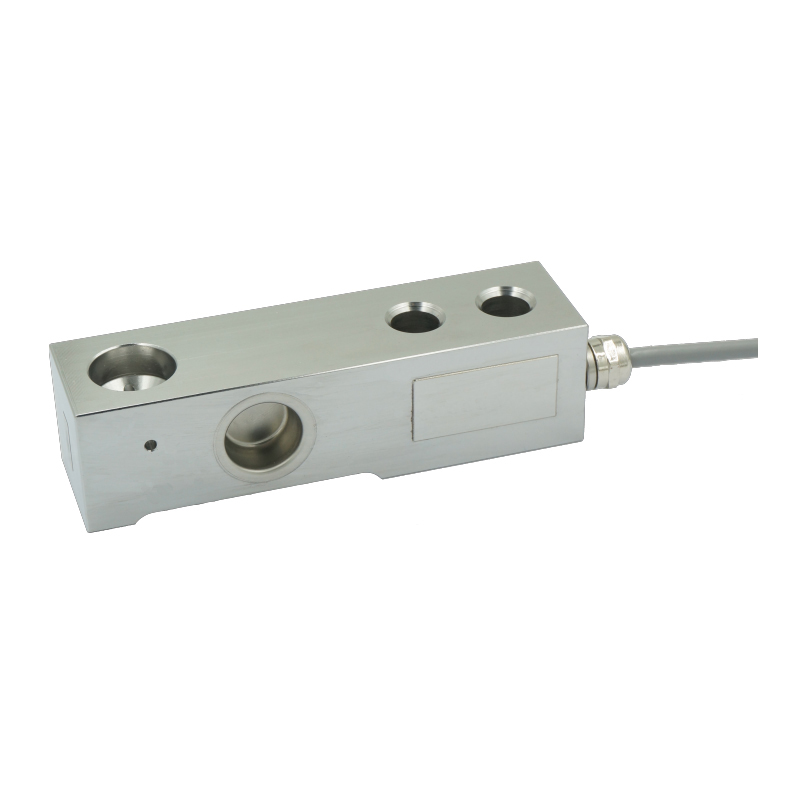Flat Membrane Pressure Sensors in Industrial Milk Tanks: Hygienic and Reliable Monitoring
From: Issued date 2025.07.31 Back

In the food and beverage industry, especially in dairy processing, hygiene, accuracy, and durability are paramount. One critical component that plays an integral role in ensuring the smooth operation of milk storage and processing systems is the pressure sensor. Among the different types of sensors, the flat membrane pressure sensor stands out as an ideal solution for industrial milk tanks. This article will discuss its working principle, application advantages, integration challenges, and the value it brings to the dairy industry.
1. Overview of Industrial Milk Tanks and Their Monitoring Needs
Industrial milk tanks, commonly known as milk silos or milk cooling tanks, are essential in the dairy supply chain. These tanks are used to store raw or pasteurized milk at controlled temperatures before further processing or distribution. To ensure optimal product quality and regulatory compliance, several parameters need to be monitored:
• Level of milk (to prevent overflows or shortages)
• Pressure (to monitor tank pressurization and cleaning cycles)
• Temperature (to maintain milk freshness)
• CIP process conditions (Clean-In-Place cleaning with high-temperature fluids)
Pressure sensors are critical during both milk storage and the CIP process. However, conventional pressure sensors with protruding diaphragms may not be suitable for hygienic applications. This is where flat membrane pressure sensors offer significant advantages.
2. What Is a Flat Membrane Pressure Sensor?
A flat membrane pressure sensor, also known as a flush diaphragm pressure sensor, features a smooth, flush-mounted diaphragm that directly contacts the media (milk in this case) without any crevices or dead zones. The diaphragm is typically made from stainless steel (often SS316L), ensuring resistance to corrosion and suitability for food-grade applications.
Working Principle:
The pressure from the milk exerts force on the flat diaphragm. This pressure is transferred through an internal filling fluid (such as silicone oil) to the sensing element (e.g., piezoresistive or capacitive). The sensor then converts this physical pressure into an electrical signal, which is transmitted to the control system for real-time monitoring and control.
3. Key Advantages of Flat Membrane Sensors in Milk Tank Applications
A. Hygienic Design
In milk tanks, hygiene is non-negotiable. The flat membrane design minimizes the risk of bacteria buildup because it offers:
• No cavities or dead corners where milk residues could accumulate.
• Easy-to-clean surfaces, supporting CIP and SIP (Sterilization-In-Place) cleaning processes.
• Compliance with 3-A, EHEDG, and FDA standards when using food-grade materials and designs.
B. Resistance to Viscous and Sticky Media
Milk is a relatively low-viscosity liquid, but during processing, it may mix with additives or become part of more viscous dairy products such as cream or flavored milk. A flat membrane can handle:
• Sticky or foamy substances
• Milk fat residues
• Cleaning agents during CIP
Unlike recessed sensors, flush diaphragm models won’t clog or get fouled by sticky media.
C. Robustness Against Pressure Spikes and Cleaning Conditions
During CIP cleaning cycles, tanks are exposed to:
• High-pressure cleaning fluids
• Rapid temperature changes (from cold milk to hot water/steam)
• Aggressive chemicals (alkaline or acidic solutions)
Flat membrane sensors are built to withstand these harsh cleaning conditions without degrading in accuracy or lifespan. Models made from stainless steel and with welded seals show exceptional longevity.
D. Accurate Pressure Monitoring for Process Control
Maintaining correct pressure inside the tank is crucial for:
• Preventing over-pressurization during filling
• Monitoring pump and valve performance
• Ensuring vacuum or slight positive pressure to avoid contamination
Accurate pressure readings from the flat membrane sensor allow dairy plant control systems to adjust operations in real time, improving efficiency and safety.
4. Integration Points and Mounting Considerations
To maximize the benefits of flat membrane pressure sensors in milk tanks, the following installation points are critical:
• Bottom or side mounting: Often used for accurate pressure or level calculation via hydrostatic pressure.
• Tri-clamp connections: These ensure hygienic, tool-free installation and easy sensor removal.
• Flush with tank walls: Prevents obstruction during tank cleaning or product flow.
When integrated with PLCs or SCADA systems, these sensors help maintain a real-time overview of storage conditions and generate alerts for maintenance or anomalies.
5. Use Case: Flat Membrane Sensor in a 10,000-Liter Milk Cooling Tank
In a dairy processing facility, a 10,000-liter stainless steel cooling tank stores raw milk before pasteurization. A WTsensor flat membrane pressure transmitter is installed near the tank’s bottom to:
• Monitor hydrostatic pressure (to estimate volume)
• Detect abnormal pressure changes during cleaning or filling
• Interface with the plant’s automated cleaning system
The sensor transmits a 4-20 mA output signal to the plant’s control panel. The sensor’s stainless steel diaphragm withstands daily hot water flushing at 85°C and alkaline detergents used during CIP, with no drift in readings after months of continuous use.
6. Challenges in Application and How to Overcome Them
While flat membrane pressure sensors offer numerous benefits, integration is not without challenges:
A. Temperature Effects
Milk must be stored at low temperatures, while cleaning may involve high-temperature fluids. Sensors must be temperature-compensated or equipped with thermal isolation to ensure accuracy.
Solution: Use sensors with built-in temperature compensation and materials rated for thermal cycling.
B. Sensor Calibration for Hydrostatic Level
When using pressure sensors for level monitoring via hydrostatic pressure, calibration must consider:
• Density variations due to temperature or milk fat content
• Tank geometry and placement height
Solution: Apply custom calibration formulas or use digital transmitters that can be configured with tank-specific parameters.
C. Long-Term Stability and Drift
Over time, sensor performance can drift due to exposure to temperature cycling and cleaning chemicals.
Solution: Select sensors with proven long-term stability (e.g., <0.2% FS/year) and perform periodic calibration.
7. Future Trends: Smart Sensors and Digital Communication
The dairy industry is evolving towards digitalization and smart manufacturing. Flat membrane pressure sensors are adapting to this trend by offering:
• IO-Link or HART communication for integration with Industry 4.0 systems
• Self-diagnostics to detect membrane damage or drift
• Wireless versions for hard-to-access tanks
These innovations allow dairy producers to perform predictive maintenance, optimize cleaning cycles, and reduce downtime.
The application of flat membrane pressure sensors in industrial milk tanks is a game-changer for hygienic process monitoring. Their smooth design, chemical and temperature resistance, and accurate performance under dynamic conditions make them ideally suited for dairy environments. As automation and hygiene standards rise in food processing, these sensors will become an indispensable part of modern dairy plant infrastructure.
By integrating high-quality flat diaphragm sensors with automated control systems, dairy manufacturers can ensure product safety, maintain regulatory compliance, and enhance production efficiency—all critical for meeting the growing global demand for milk and dairy products.

